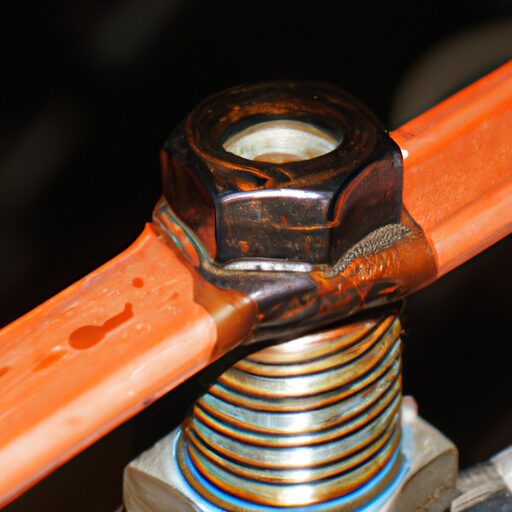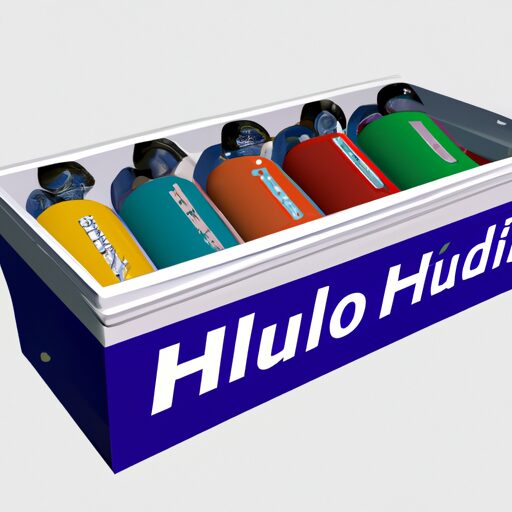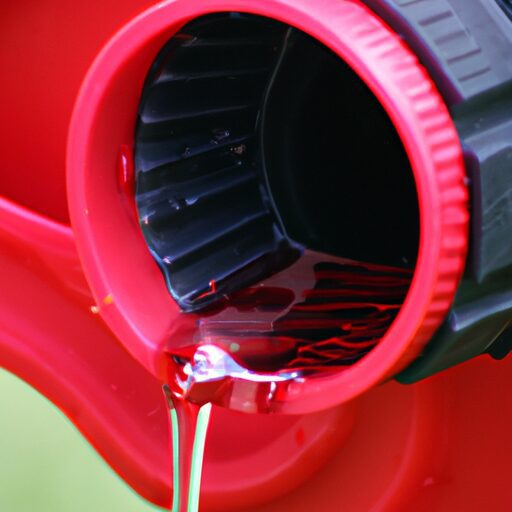How To Add Fluid To A Hydraulic Jack
How does one add fluid to a hydraulic jack? This question is of great importance for those seeking to maintain and optimize the functionality of their hydraulic jacks. In this article, we will provide a detailed and technical guide on how to add fluid to a hydraulic jack in an objective and impersonal manner. By following the precise steps outlined in this article, readers will gain a thorough understanding of the process involved in adding fluid to their hydraulic jacks. The instructions provided will be clear and concise, ensuring that readers can easily follow along and successfully complete the task at hand. It is important for individuals who desire a comprehensive understanding of how to properly maintain their hydraulic jacks to carefully read through this article.
Gather the Necessary Tools and Materials
In order to add fluid to a hydraulic jack, it is essential to gather the necessary tools and materials. The first step in this process is choosing the right hydraulic fluid. It is important to select a fluid that meets the manufacturer’s specifications for your specific hydraulic jack model. This information can usually be found in the owner’s manual or on the manufacturer’s website. Using an incorrect fluid can lead to poor performance and potential damage to the jack.
Once you have selected the appropriate hydraulic fluid, you will need a few tools and materials to complete the task. First, you will need a clean container or funnel with a narrow spout that can fit into the fill plug of your hydraulic jack. This will allow for precise pouring of the fluid without any spillage or contamination.
Additionally, it is recommended to have some rags or paper towels handy to wipe up any spills or drips that may occur during the filling process. Keeping your work area clean and free from debris will help ensure proper functioning of your hydraulic jack.
Before proceeding with adding fluid, it is crucial to take note of any tips provided by the manufacturer for maintaining your particular model of hydraulic jack properly. These tips may include specific maintenance schedules, cleaning instructions, and other guidelines that will help extend the lifespan of your jack.
With all necessary tools and materials gathered and knowledge about maintaining your hydraulic jack properly in mind, you are now ready to locate the fill plug on the hydraulic jack…
Locate the Fill Plug on the Hydraulic Jack
To properly maintain the functionality of a certain lifting device, it is essential to identify and locate the designated area for replenishing its internal lubrication. In the case of a hydraulic jack, this area is known as the fill plug. The fill plug serves as an access point through which hydraulic fluid can be added or replaced when necessary. To identify the fill plug on a hydraulic jack, there are several steps that need to be followed.
Firstly, it is important to consult the user manual or manufacturer’s instructions for specific guidance on locating the fill plug. This information may vary depending on the make and model of the hydraulic jack. Generally, however, the fill plug is typically located near the top of the jack’s cylinder or reservoir.
Secondly, visually inspecting the hydraulic jack can also help in identifying the fill plug. It often appears as a small threaded opening with a cap or cover. Some jacks may have multiple plugs, so it is crucial to locate the correct one for adding fluid.
Lastly, if all else fails, reaching out to customer support or contacting a professional technician can provide valuable assistance in locating and identifying the fill plug on a hydraulic jack.
Having successfully identified and located the fill plug on a hydraulic jack, next steps involve preparing it for fluid addition.
[//]: # (Transition: Now that we have identified and located the fill plug on our hydraulic jack,)Prepare the Hydraulic Jack for Fluid Addition
One crucial step in maintaining the functionality of a lifting device is properly preparing it for fluid replenishment. To ensure a successful fluid addition to a hydraulic jack, there are several key steps that need to be followed:
- Perform a visual inspection of the jack to check for any visible damage or leaks.
- Clean the exterior surfaces of the jack using a mild detergent and water solution.
- Position the jack on a level surface to prevent any instability during the fluid addition process.
- Lower the ram fully by turning the handle counterclockwise until it reaches its lowest point.
- Follow the manufacturer’s instructions for bleeding air from the system if necessary.
It is important to note that during this preparation phase, troubleshooting tips can also be applied. For example, if there are any signs of leakage or damage, it may indicate an underlying issue with the hydraulic system that needs to be addressed before adding fluid.
With these preparatory steps completed, it is now time to move on to adding hydraulic fluid to the jack.
Add the Hydraulic Fluid to the Jack
Following the completion of the preparatory steps, the next step in ensuring the seamless operation of a lifting device involves infusing life-giving sustenance to fuel its hydraulic system. This crucial step entails adding hydraulic fluid to the jack. Before proceeding, it is essential to check that all valves are tightly closed to prevent any leakage during this process.
To add hydraulic fluid, locate the designated fill port on the jack and remove the cap or plug. It is important to use only the recommended type of hydraulic fluid as specified by the manufacturer, as using an incompatible fluid can lead to malfunctioning or damage. Slowly pour the fluid into the fill port until it reaches approximately 1 inch from the top.
During this process, it is possible for air pockets to form within the hydraulic system, which can hinder its proper functioning. Therefore, it is necessary to bleed any trapped air by operating and cycling the jack several times before replacing and tightening any removed components.
While adding hydraulic fluid appears straightforward, there are common mistakes that should be avoided. These include overfilling or underfilling beyond or below recommended levels respectively, using incorrect fluids or failing to properly tighten valves and caps after addition.
Having successfully added hydraulic fluid and bled any trapped air pockets in accordance with these guidelines, we can now proceed to check the fluid level and top off if necessary in order to ensure optimal performance of our hydraulic jack.
Check the Fluid Level and Top Off if Necessary
After successfully adding hydraulic fluid and bleeding any trapped air pockets, the next step involves checking the level of the fluid and topping it off if necessary to ensure optimal performance of the lifting device. To check the hydraulic jack fluid level, follow these steps:
- Position the jack on a level surface: Before checking the fluid level, ensure that the jack is placed on a flat and stable surface to obtain an accurate reading.
- Locate the fill plug: Look for a small threaded plug usually located on top or near the base of the hydraulic jack. This plug allows access to check and add fluid if needed.
- Remove the fill plug: Using an appropriate tool like a wrench or socket, carefully remove the fill plug to expose the oil reservoir chamber.
Once you have removed the fill plug, visually inspect whether there is sufficient fluid in the reservoir. The fluid should be at or slightly below the opening of the fill hole. If it is below this level, carefully add more hydraulic fluid until it reaches the desired mark.
To avoid overfilling, use caution when topping off as excess fluid can cause operational issues. Finally, replace the fill plug and test your hydraulic jack to ensure proper functioning.
This section demonstrates how to check hydraulic jack fluid levels and troubleshoot any potential issues with low oil levels before moving on to replacingthe fill plug and testing hydraulic jack operation.
Replace the Fill Plug and Test the Hydraulic Jack
After checking the fluid level and topping it off if necessary, the next step in maintaining a hydraulic jack is to replace the fill plug and test the jack. This ensures that the jack is properly sealed and ready for use.
Before replacing the fill plug, it is important to ensure that there are no leaks or other common problems with hydraulic jacks. Leaks can occur due to worn seals or damaged components, which may require professional repair or replacement. Additionally, it is crucial to choose the right hydraulic fluid for your jack as using an incompatible fluid can lead to malfunctions or damage.
To replace the fill plug, carefully remove the old plug and clean any debris from around the opening. Then, insert a new plug and tighten it securely but not excessively.
Once the fill plug has been replaced, it is essential to test the hydraulic jack before putting it into regular use. This involves raising and lowering a load several times while observing any signs of instability or abnormal behavior.
In conclusion, after replacing the fill plug and testing your hydraulic jack for functionality, you should proceed to properly dispose of any used fluid and clean up any spills or messes that may have occurred during this process.
Properly Dispose of any Used Fluid and Clean Up
To ensure environmental responsibility and maintain a clean work area, it is crucial to properly dispose of any used fluid from the hydraulic system and promptly clean up any spills or messes that may have occurred during this maintenance process. Proper disposal of used fluid is essential to prevent potential harm to the environment. Hydraulic fluids can contain contaminants such as metals, chemicals, and other substances that can be hazardous if released into the surrounding ecosystem.
When disposing of used hydraulic fluid, it is important to follow local regulations and guidelines. Contacting local waste management authorities or recycling centers can provide information on proper disposal methods. In some cases, these facilities may accept used hydraulic fluids for recycling or safe disposal.
Cleaning up spills or leaks promptly is vital to minimize environmental impact. Spills should be contained using absorbent materials like rags, pads, or spill kits designed specifically for oil-based fluids. The contaminated material should then be disposed of properly according to local regulations.
By adhering to proper disposal methods and promptly cleaning up any spills or messes, individuals can contribute towards environmental protection while maintaining a safe and organized work area. It is essential to prioritize responsible fluid management in order to mitigate potential harm caused by improper disposal practices.
Frequently Asked Questions
How often should I add fluid to my hydraulic jack?
Proper maintenance of a hydraulic jack involves checking fluid levels regularly. It is recommended to inspect for signs of fluid leakage and add fluid as needed. Neglecting this can lead to reduced performance and potential damage to the jack.
Can I use any type of hydraulic fluid for my jack?
The compatibility of hydraulic fluids with a hydraulic jack is crucial. It is recommended to use the specific type of hydraulic fluid recommended by the manufacturer, as alternative fluids may not provide optimal performance and could potentially damage the jack.
What should I do if I accidentally overfill the hydraulic jack with fluid?
To recover from an overfilled hydraulic jack, first, release the excess fluid by opening the release valve. Then, ensure that the reservoir is at the recommended level before using the jack. Prevent overfill accidents by carefully monitoring and following manufacturer’s instructions for filling the jack.
How do I know if my hydraulic jack is low on fluid?
To check the fluid level in a hydraulic jack, inspect the reservoir for any signs of leakage or low fluid. If the jack is not lifting properly, it may indicate low fluid levels. Troubleshooting common issues with hydraulic jacks can help identify and resolve problems.
Is it necessary to clean the hydraulic jack after adding fluid?
The cleaning process of a hydraulic jack after adding fluid is not necessary. However, neglecting to clean the jack may result in potential risks such as contamination and decreased performance.
Conclusion
In conclusion, adding fluid to a hydraulic jack is a straightforward process that requires the proper tools and materials. By locating the fill plug, preparing the jack, and adding the hydraulic fluid carefully, you can ensure optimal performance. It is essential to check the fluid level and top off if necessary before replacing the fill plug and testing the jack. Finally, remember to dispose of any used fluid responsibly and clean up any spills. As they say, "A well-oiled machine keeps things running smoothly."






